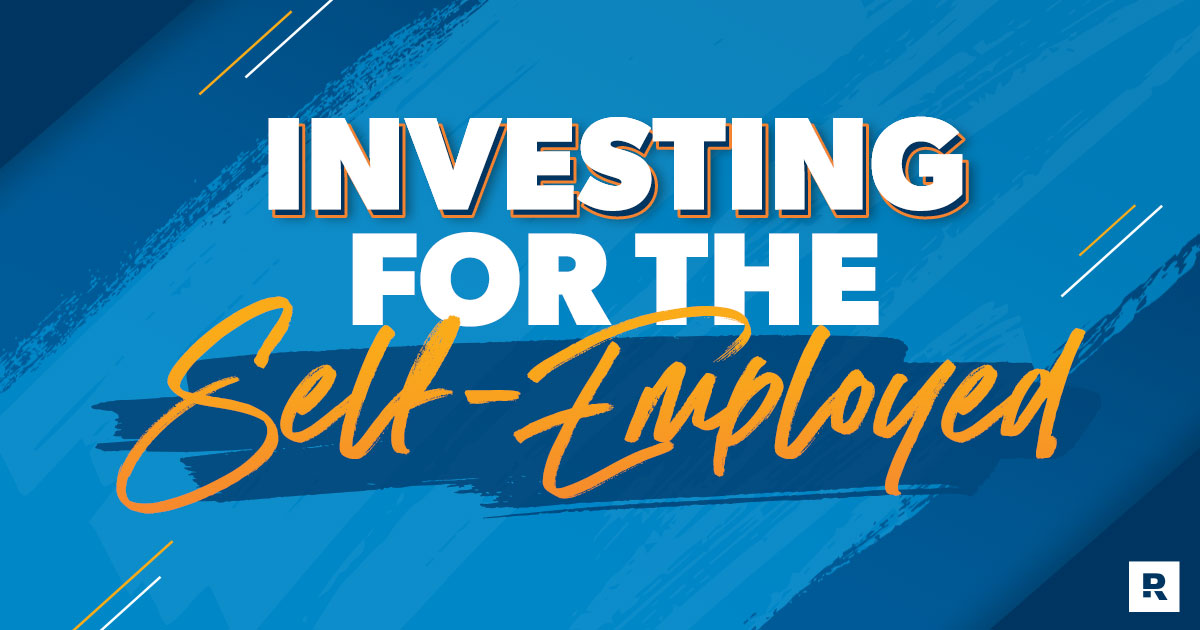5 Investing Options for Self-Employed People
4 Min Read | Sep 6, 2023

Almost 15 million Americans are self-employed, but nearly 30% of them don’t save for retirement at all. That’s not good! We know you’re under a lot of stress and other financial issues feel more pressing. We get it. But there’s no excuse for not putting anything away. Even if you have to start small, you need to set aside something for retirement. Here are a few options:
Traditional or Roth IRA (Individual Retirement Arrangement)
Anyone with earned income can contribute to an IRA. You can only contribute up to $6,000 per year, or $7,000 if you’re age 50 or older. Roth IRA contributions may be limited by income, so if you make too much money in a year, Roth IRAs aren’t an option. With a traditional IRA, you avoid paying taxes on the money you put into it. With a Roth IRA, you avoid taxes when you take it out in retirement (but not before).
Simplified Employee Pension IRA (or SEP IRA)
This kind of IRA is popular among small business owners. In a SEP IRA, you can put away as much as 25% of your net earnings every year, up to $57,000. And here’s a bonus: you can wait to fund this IRA until after you pay your taxes. That way, if you have a great year, you can contribute more!
SIMPLE (Savings Incentive Match Plan for Employees) IRA
This kind of IRA allows you to invest in a plan if you have up to 100 employees. However, you have to match your employees’ contributions to their plan (up to 3%). You can only contribute $13,500 a year (plus $3K if you’re 50 or over) to your own plan. You can’t have any other plans, like a SEP IRA, if you choose the SIMPLE IRA. However, you can open one even if you have a large income. You can contribute up to 3% of your net self-employment income. If you withdraw from a SIMPLE IRA within two years of opening it, you’ll pay a whopping 25% penalty, so put money in there only if you can keep it there long term (which is what you want to do anyway!).
Individual (or Solo) 401(k)
You can choose this kind of investment only if you have no employees (with the exception of your spouse). As the employee, you can put away up to $20,500 a year into a solo 401(k). As the boss, you can contribute an additional percentage of your net income to the same 401(k)—up to $61,000 if you're under 50 and $67,000 if you're 50 or older. Keep in mind that you can’t contribute more than your self-employment income. If you choose the Roth version of the 401(k), you put in after-tax dollars and your money grows tax-free, which means you won’t have to pay taxes on the money you withdraw later.
Backdoor IRA
If your adjusted gross income (AGI) is too high for a Roth IRA (married filing jointly is $204,000; single filers is $129,000), you still have an option. And it’s completely legal. Its nickname is the Backdoor IRA. Here’s how it works: First, you open a traditional, nondeductible IRA. Make your maximum contribution ($6,000, or $7,000 if you’re age 50 or older). Then, shortly after that, you convert that IRA into a Roth IRA. There are no income restrictions on converting from a traditional IRA to a Roth IRA, and Roth IRAs do not have income limits. You can do this every year that your income is too high to directly contribute to your Roth IRA.
Market chaos, inflation, your future—work with a pro to navigate this stuff.
Don’t make costly mistakes in investing! Talk with a financial advisor about your situation. They will be able to help you open accounts and do the paperwork to avoid any penalties.
In all our years, we’ve never heard anyone say, “Wow, I really wish I hadn’t put that much money away for retirement.” On the other hand, we’ve talked to lots of people who didn’t save early on and had to play catch up. Or worse, they had to settle for a so-so retirement, not the one they dreamed about. Don’t make that same mistake. Start right now. Call an investment advisor. We can recommend one in your area if you don’t know who to contact. You’ll be glad you did.
Make an Investment Plan With a Pro
SmartVestor shows you up to five investing professionals in your area for free. No commitments, no hidden fees.
This article provides general guidelines about investing topics. Your situation may be unique. If you have questions, connect with a SmartVestor Pro. Ramsey Solutions is a paid, non-client promoter of participating Pros.


